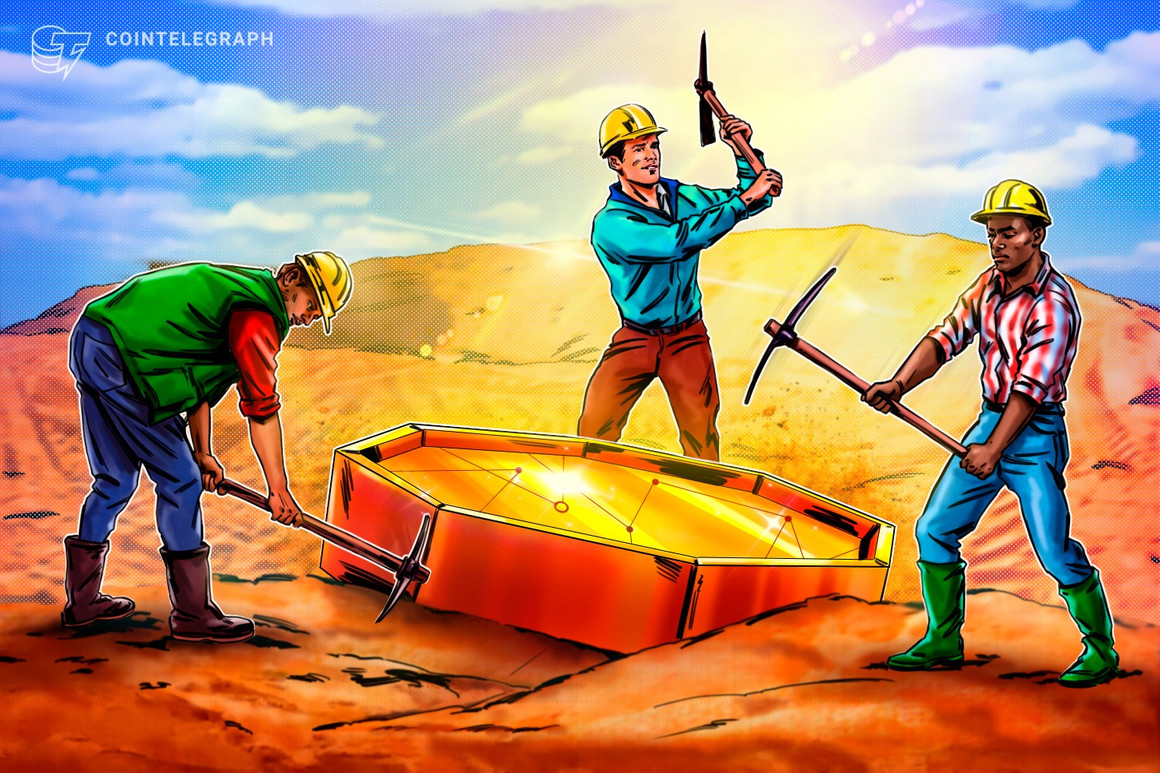In the early days of Bitcoin (BTC), crypto enthusiasts only required a basic personal computer with an internet connection to generate new BTC tokens
In the early days of Bitcoin (BTC), crypto enthusiasts only required a basic personal computer with an internet connection to generate new BTC tokens through a distributed computing process known as mining.
However, with more people chasing the same number of block rewards, Bitcoin’s mining process has become more challenging with time. In fact, the quantum of rewards will progressively reduce by half every four years, making it less rewarding for individual miners who will need to allocate greater computational resources with time.
Available on blockchain protocols that employ a proof-of-work (PoW) consensus mechanism, this mining process requires application-specific integrated circuits (ASICs) to be deployed in the form of large rigs so as to complete the complex nature of mathematical problems within the time needed to mine a block.
With the increasing difficulty of the mining algorithm and the rewards for mining a block reducing with time, it has become impossible for a piece of single personal computing equipment to successfully mine a block.
This has brought the concept of a cryptocurrency mining pool to the forefront, where individual miners or users come together and pool their computational resources in order to improve their chances of mining a block and share the rewards received among them.
In existence since 2010, when Slush Pool was formed as the first Bitcoin mining pool, there are now many popular mining pools for cryptocurrencies like Ether (ETH), Zcash (ZEC), Bitcoin Cash (BCH), Bitcoin SV (BSV) and more to choose from.
Replete with their own dashboards that provide status on aspects like the mining hardware’s status, the current hash rate, estimated earnings and other parameters, the mining pools offer crypto users the opportunity to participate in the mining process of a particular cryptocurrency consistently and earn regular rewards in proportion to the computing power contributed.
Understanding the cryptocurrency mining process
Before we delve into what is a cryptocurrency mining pool and how an individual can join one, let us look at how cryptocurrency mining takes place and understand the key difficulties involved.
Firstly, for any PoW blockchain protocol, the process of mining its native token involves solving math problems using computing power, where the correct answer is represented as the block’s hash number, and rewards are presented to the entity that solves the fastest.
These rewards are presented in the form of native tokens, with the mining process programmed such that a new transaction block is mined after specific durations of time. In the case of Bitcoin, this time is around ten minutes and the complexity, or hash rate, is adjusted depending on the amount of computing power available on the network.
With more computing power, the hash rate proportionately increases and requires even more powerful computing power to be having any chance of solving the mathematical puzzle within each cycle time.
This is the reason why cryptocurrency miners have graduated from using personal computers or CPU mining to using graphic processing units (GPUs) and now shifting entirely to custom-built rigs using hundreds of ASICs in order to mine cryptocurrency.
These ASIC miners continue to evolve and use the latest chip technology to provide a hash rate that can increase the chances of mining Bitcoin or any other cryptocurrency. Depending on the hash rate, power consumption, the noise produced, and profitability per day, ASIC miners like the Bitmain Antminer S19 Pro, AvalonMiner 1166 Pro, and WhatsMiner M32 are preferred among the crypto mining community today.
Whether it be releasing new tokens into the system or verifying and adding transactions to the public ledger in the form of blocks, the mining process gets tougher as more miners compete for the same.
Since the reward for mining a Bitcoin block is 6.25 BTC, it is quite lucrative from a monetary perspective and has motivated many miners to increase their computing capacity by purchasing expensive ASIC miners.
Alternatively, those who would rather dedicate their existing computing capacity to earn lesser but consistent rewards prefer to join a cryptocurrency mining pool like F2pool, Slush Pool, or AntPool, and they like to combine resources and earn daily rewards for their contributions.

How do crypto mining pools work?
A cryptocurrency mining pool is a collection of miners that work together as one entity to augment their chances of mining a block and share rewards among each other in proportion to the computing power contributed by them in successfully mining a block.
The mining pool operator manages activities such as recording the work performed by each pool member, managing their hashes, assigning reward shares to each member and even the work to be performed by them individually.
In return, a mining pool fee is deducted from the rewards distributed to each member, which is computed based on the pool-sharing mechanism…
cointelegraph.com
